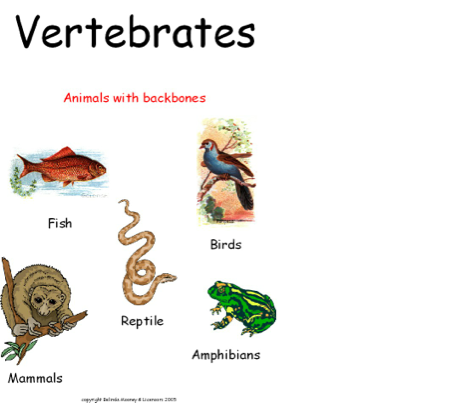Vertebrates 5si Group 2 On Flowvella

The five main groups of vertebrates, known as classes, are: fish, amphibians, reptiles, birds and mammals. Vertebrate species are assigned groups based on shared traits, such as body covering, the ability to maintain a steady temperature and the number of chambers in the heart, among others.
One of the most interesting lessons I teach my high school students is on classification. It is fascinating seeing the students form an answer to the question 'what is a fish?' Or 'what is a bird?' But before we can get down to what makes mammals, birds, reptiles, fish and amphibians different, we have to ask ourselves 'what do they all have in common?' Mammals, birds, reptiles, amphibians and fish are all members of the vertebrate phylum; but this begs the question: 'What are Vertebrates?' Hosted ftp storage mlv.
Vertebrates are a group of animals that have backbones and spinal columns, that first appeared during the Cambrian Explosion around 525 million years ago. Vertebrates display the greatest difference in size of any group of organisms on Earth. Vertebrates range from frogs just a few millimetres long, to the mighty 33m blue whale! Despite the huge variety shown in this group, vertebrates comprise a mere 4% of all discovered animal species. This hub looks at the five major divisions of vertebrates, and what makes them unique.
 With Lucidpress, you can place things right where you’d like with natural, intuitive motions, then edit them with ease. Intuitive editor “How do I make it look the way I want?” It's the question faced by all designers using unnecessarily complex software.
With Lucidpress, you can place things right where you’d like with natural, intuitive motions, then edit them with ease. Intuitive editor “How do I make it look the way I want?” It's the question faced by all designers using unnecessarily complex software.
Mammals are possibly the most charasmatic of all of the vertebrates. Perhaps this is because we too are mammals, and feel a special affinity towards them. They are also (relatively) large, furry and cuddly - not many people call mammals creepy! But what makes a mammal a mammal? Mammals are named after mammary glands - a milk producing gland that all mammals use to feed their young.
Additionally, mammals: • Have a covering of hair or fur; • Breathe air through lungs; • Maintain a constant internal temperature (homeotherms)*; • Undergo internal fertilisation and give birth to live young (are viviparous). NB: Homeothermy is the correct scientific term for 'warm-blooded.' Dinosaurs were the greatest creatures to roam our planet, both in terms of size and many people's affection. Sadly, it doesn't seem this affection has been granted to the dinosaurs descendents!
Tnpsc Group 2
Reptiles (the group to which dinosaurs belonged) are often thought of as creepy, scary or even - quite incorrectly - slimy and disgusting. Reptiles are actually covered in dry scaly skin that prevents water loss - a problem that prevented the amphibians from severing all ties to the water. In addition to their dry, scaly, waterproof skin, reptiles: • Breathe air through lungs; • Have a temperature that varies with the environment (poikilotherms)*; • Undergo internal fertilisation; • Lay leathery-shelled eggs (are oviparous) on land.
NB: Poikilothermy is the correct scientific term for 'cold-blooded.' Fish spend their entire lives in water and are exquisitely adapted to this lifestyle. Fish: • Absorb oxygen from the water through gills; • Have fins for swimming; • Undergo external fertilisation; • Lay soft shelled eggs (oviparous) in water; • (Most) Have an internal temperature that varies with the environment (Poikilothermic). There are several exceptions to these rules. Sharks, for example, give birth to live young and practice internal fertilisation.
In fact, sharks lack a true backbone as their skeleton is made of cartilage and not bone. Amphibians were the first group of vertebrates to leave the water and walk on dry land. They even managed to grow to huge sizes before the dinosaurs took over the world. There are three types of extant amphibian - frogs and toads, salamanders and caecilians. Many amphibians undergo a metamorphosis from a juvenile stage to an adult stage, with the adult stage adapted to life outside of water.
One of the greatest differences between these stages is how the animal breathes. When juvenile, amphibians use gills to 'breathe' in water; when adult, amphibians lose their gills and develop lungs, although most can absorb some oxygen from water through their porous skin. Amphibians: • Breathe air through lungs (when adult); • Have moist, porous skin; • Undergo external fertilisation; • Lay soft-shelled, gelatinous eggs in water; • Have an internal temperature that varies with the environment (Poikilothermic). Yeah.I tried finding out some more and struggled. How I wish I had my uni papers access again. I have a first class degree in Biology with a specialism in Toxicology and Cell Biology and a Teaching Certificate in Secondary Science.